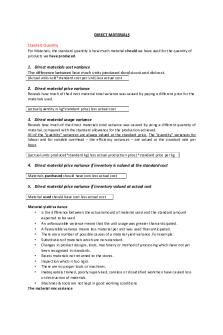How to analyse the line of argumentation PDF

| Title | How to analyse the line of argumentation |
|---|---|
| Author | Colonel Viper |
| Course | Geschichte g4 Q3 |
| Institution | Gustav-Heinemann-Schule |
| Pages | 2 |
| File Size | 98.7 KB |
| File Type | |
| Total Downloads | 7 |
| Total Views | 157 |
Summary
Übungen im bilingualen Geschichtsunterricht. Wie analysiere ich die Argumentation eines Textes?...
Description
DÖR/ E
method sheet How to analyse the line of argumentation
Besides the usage of stylistic devices and specific words, an author of an article (or speech) structures his/her text in a specific way. Not all of the different parts of the line of argumentation do always apply for every text at hand. Sometimes an author might even start with an appeal or he/she uses a narration not at the beginning of his/her text but at the end. Nevertheless, most of the time a certain kind of exposition or description can be found in the beginning of a text, a form of narration and/or argumentation as well as persuasion in the main body while the instruction and/or appeal can be found at the end of a text.
LINE OF ARGUMENTATION
PURPOSE
INTRODUCTION / BEGINNING OF A TEXT Exposition The reader is informed about important The reader is given information or an explanation about a aspects and acquires background certain aspect which might be relevant for the text in general. information which might be of relevance e.g. the author mentions personal, institutional, political, for the upcoming argumentation. geographical names and gives further explanation Description The reader can imagine the described place, person, object,… more clearly and The author describes a place, person, object,… in detail. a better understanding might be achieved. MAIN BODY Narration The reader can imagine the presented The author relates to an event or a sequence of events and situation clearly and might even presents them in a lively, narrative style. sympathise or identify with the person or e.g. by using a variety of adverbs, adjectives, direct speech, people and the described description of emotions,… conflict/problem. Argumentation The reader is supposed to consider the The author presents his/her arguments. pros and cons and to be convinced by e.g. by structuring the pros and cons, by using an informative the author’s point of view. and matter-of-fact style by referring to dates, figures and/or ! Success depends on the presentation of statistics,… his/her arguments. ! It is important to realise how exactly arguments are revealed. e.g. Do pros and cons alternate or are first only the pros presented and then invalidated by the cons (or vice versa)?
Persuasion The author (clearly) supports a certain point of view (often in a rather emotional way) and often addresses the reader on an emotional level. e.g. by supporting feelings of sympathy, pity, anger, hatred e.g. by using adverbs and stylistic devices
The reader’s opinion or action(s) are supposed to be influenced by the author’s ideas.
CONCLUSION / END OF A TEXT Instruction The reader is supposed to realise what to The reader is given advice or is taught what to do next. do or how to do something. e.g. by explaining how a certain thing can be achieved/changed/… Appeal The author asks (indirectly/directly) for action-taking. e.g. often on an emotional level
The reader realises that he/she him/herself can take action in order to change something.
DÖR/ E
method sheet...
Similar Free PDFs

How to Analyse a Case Study
- 6 Pages

Argumentation of a book
- 3 Pages

How to define the market
- 3 Pages

How to Make a Line Graph in Word
- 7 Pages

Schulkleidung Argumentation
- 1 Pages

Example of line by line coding
- 2 Pages
Popular Institutions
- Tinajero National High School - Annex
- Politeknik Caltex Riau
- Yokohama City University
- SGT University
- University of Al-Qadisiyah
- Divine Word College of Vigan
- Techniek College Rotterdam
- Universidade de Santiago
- Universiti Teknologi MARA Cawangan Johor Kampus Pasir Gudang
- Poltekkes Kemenkes Yogyakarta
- Baguio City National High School
- Colegio san marcos
- preparatoria uno
- Centro de Bachillerato Tecnológico Industrial y de Servicios No. 107
- Dalian Maritime University
- Quang Trung Secondary School
- Colegio Tecnológico en Informática
- Corporación Regional de Educación Superior
- Grupo CEDVA
- Dar Al Uloom University
- Centro de Estudios Preuniversitarios de la Universidad Nacional de Ingeniería
- 上智大学
- Aakash International School, Nuna Majara
- San Felipe Neri Catholic School
- Kang Chiao International School - New Taipei City
- Misamis Occidental National High School
- Institución Educativa Escuela Normal Juan Ladrilleros
- Kolehiyo ng Pantukan
- Batanes State College
- Instituto Continental
- Sekolah Menengah Kejuruan Kesehatan Kaltara (Tarakan)
- Colegio de La Inmaculada Concepcion - Cebu









